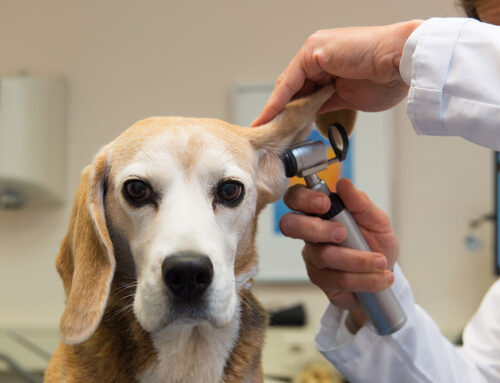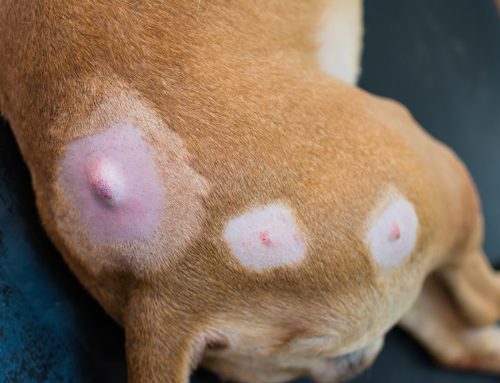Most pet owners are surprised to find out that more than half of American pets are overweight or obese. Statistically speaking, your pet is more likely to be overweight than not, but many pet owners remain unaware of the problem. In fact, most pet owners don’t know what their pet’s healthy weight looks like. Therefore, our Palm City Animal Medical Center team wants to explain how to determine whether your pet is overweight or obese, the harm this condition can cause your furry pal, and how to help them lose those extra pounds.
Studies show that overweight and obese pets are predisposed to developing serious conditions, including diabetes, arthritis, high blood pressure, and kidney disease. In addition, because the extra pounds hinder their mobility, an overweight pet does not exercise adequately, which can lead to more weight gain. Together, these risk factors shorten an obese pet’s life by approximately two years less than a pet whose weight is at a healthy level. To manage your pet’s weight and help them live the longest, healthiest life possible, follow our tips.
#1: Learn about pet body condition scoring
Body condition scoring (BCS) takes into account your pet’s individual body size and structure to determine their ideal weight. Your veterinarian visually and tactilely assesses your pet’s weight, assigning them a one through five or a one through nine value, depending on the BCS system they use. A midscale score is ideal. A low value indicates your pet is underweight, and a high score indicates they are overweight. A pet whose weight is ideal has a visible waist tuck when you view them from the side and from above, and an easily palpable thin fat covering over their ribs. Fat deposits around the tail base, hips, neck, chest, or lower abdomen indicate a pet is overweight or obese.
#2: Bring your pet in for regular check-ups and weigh-ins
If you have never used a BCS to assess your pet’s weight, you may have difficulty determining your pet’s weight score. However, don’t despair. Our Palm City Animal Medical Center team will perform your pet’s BCS assessment and weigh them during their annual or semiannual wellness visit. We will then recommend effective nutritional strategies based on their age and activity level. If your pet’s weight is creeping up, we can intervene before the problem worsens. In addition, our team may recommend that your pet be tested for underlying diseases that can contribute to obesity and excess weight, including thyroid disease or Cushing’s syndrome.
#3: Cut calories, not nutrients, from your pet’s diet
Cutting calories from your pet’s diet by feeding them less of their regular food may control their weight, but this strategy can leave your pet feeling hungry. Reducing the amount of food you feed your pet can also be risky because they may not receive a balanced amount of vitamins, minerals, and other nutrients necessary for overall health.
If you want to initiate an effective weight-loss program for your pet, you must completely switch their diet to a new food that has lower calories, higher fiber, and a balanced carbohydrate and fat content. Such a diet is nutrient-dense but energy-poor, leading to greater satiety, making it ideal for weight control. Our Palm City Animal Medical Center team can recommend the diet that will be most effective for your four-legged friend’s safe weight loss.
To prevent stomach upset and give their metabolism a chance to adjust to the reduced calories without increasing their hunger, gradually introduce your pet’s new food. This is especially important for cats, who can develop hepatic lipidosis, a life-threatening liver condition that develops if they eat too little.
#4: Encourage your pet to move
An obese pet is likely to have difficulty exercising. Start their exercise program by encouraging your pet to move in short activity bursts, including play or brisk walks, around 10 minutes per session. Gradually increase the exercise session time or intensity as your pet’s fitness and mobility improve. If your pet has advanced joint disease, consider working with a veterinary rehabilitation center to improve your furry pal’s fitness and joint strength without worsening their condition. Some rehab facilities also offer a la carte swim programs for dogs who enjoy water and need supervised exercise in a controlled setting.
#5: Aim for gradual, steady pet weight-loss progress

Slow and steady always wins the weight-loss race. An effective weight-loss program aims for your pet to lose no more than 5% of their body weight per month. Such a goal increases the chances of your pet being able to maintain their weight loss long-term. Your pet doesn’t need to fit into a wedding dress or bathing suit, so you have no reason to rush the process.
The first step on your pet’s weight-loss journey is to schedule their weight consultation and overall wellness check with our Palm City Animal Medical Center team. We will evaluate your pet’s starting weight, explain the BCS system, and recommend an effective long-term weight management plan.








Leave A Comment